UPSC Daily Current Affairs- 10th December 2023 | Current Affairs & Hindu Analysis: Daily, Weekly & Monthly PDF Download
GS-I
Critical Minerals
Subject: Geography
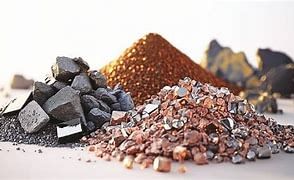
Why in News?
Recently, Government of India has made a significant move in the Mining Sector by launching the first-ever auction of critical minerals, offering 20 blocks for sale to Private Sectors.
What are the Key Features of the First Auction of Critical Minerals?
- Unprecedented Auction:
- First-ever auction of rights related to mining of lithium ore to private sectors.
- Auction includes other valuable minerals: nickel, copper, molybdenum, and rare earth elements (REEs).
- Geographical Spread:
- Mineral blocks are located across eight states.
- Tamil Nadu holds the majority with seven blocks.
- Diverse Licensing Rights:
- Two types of licenses offered:
- Mining Licences (ML): Immediate mining operations allowed for four blocks.
- Composite Licences (CL): Geological exploration permitted before mining for the remaining 16 blocks.
- Two types of licenses offered:
- Significance:
- Lithium: Critical for battery technology.
- Nickel, Copper, Molybdenum, REEs: Valuable for various industrial applications.
- Tamil Nadu Focus:
- State with the most blocks (seven) indicates substantial mineral potential.
- Innovation and Exploration:
- Introduction of Composite Licences promotes geological exploration before committing to mining operations.
- Market Impact:
- Auction signifies a shift in the approach to mineral resource management, potentially impacting the mining industry and the broader economy.
What is the Background of the First Auction of Critical Minerals?
- Government Action:
- In July 2023, the government amended the Mines and Minerals (Development and Regulation) Act, 1957, via the MMDR Amendment Act, 2023.
- This amendment empowered the Central Government to conduct auctions for 30 minerals classified as "critical."
- Identified Critical Minerals:
- The 30 critical minerals include Antimony, Beryllium, Bismuth, Cobalt, Copper, Gallium, Germanium, Graphite, Hafnium, Indium, Lithium, Molybdenum, Niobium, Nickel, PGE, Phosphorous, Potash, REE, Rhenium, Silicon, Strontium, Tantalum, Tellurium, Tin, Titanium, Tungsten, Vanadium, Zirconium, Selenium, and Cadmium.
- Auction Process:
- The ongoing auction involves the bidding of blocks containing these critical minerals.
- Bidders compete based on the highest percentage of mineral dispatch value quoted.
- Upcoming Tranches:
- Following the current auction, a second tranche of critical mineral block auctions is expected.
- Role of Geological Survey of India (GSI):
- The GSI is actively engaged in exploring critical mineral reserves throughout the country.
What are Critical Minerals?
- Definition of Critical Minerals:
- Definition: Critical minerals are vital for economic growth and national security. Their limited availability or concentration in specific regions can create supply chain vulnerabilities, leading to potential disruptions in the supply chain.
- Significance: Lack of access to these minerals poses a threat to both economic stability and national security.
- Dynamic Nature of Declaration:
- Dynamic Process: The identification of critical minerals is an evolving process, adapting to changes in technology, market dynamics, and geopolitical factors over time.
- Factors Influencing Change: New technologies, market shifts, and geopolitical considerations contribute to the dynamic nature of critical mineral declarations.
- Country-specific Lists:
- Unique Lists: Different countries establish their distinct catalog of critical minerals, tailored to their specific needs and priorities.
- US Perspective: The United States designates 50 minerals as critical, emphasizing their role in national security and economic development.
- Global Variances: Japan identifies 31 critical minerals, the UK highlights 18, the EU acknowledges 34, and Canada designates 31 based on their respective circumstances.
- Emphasis on Key Words:
- Supply Chain Vulnerabilities: The susceptibility of supply chains to disruptions due to limited mineral availability.
- National Security: The role of critical minerals in safeguarding a nation's security.
- Economic Development: The importance of these minerals in fostering economic growth.
- Geopolitical Considerations: Factors related to global politics influencing critical mineral declarations.
- Dynamic Process: The ever-changing nature of critical mineral identification.
- Country-specific Lists: Uniquely tailored inventories of critical minerals based on individual national priorities.
Significance of Critical Minerals for India:
- Economic Development:
- High-Tech Industries Reliance: Sectors like electronics, telecommunications, transport, and defense are heavily dependent on critical minerals.
- Green Technologies: Essential for the production of solar panels, wind turbines, batteries, and electric vehicles, crucial for India's economic growth and innovation.
- Job Creation and Income Generation: The growth in critical mineral-dependent sectors can lead to increased employment, income generation, and innovation.
- National Security:
- Defense and Aerospace Applications: Vital for defense, aerospace, nuclear, and space applications, requiring high-quality and reliable materials for complex functions.
- Extreme Condition Performance: Ensuring materials can withstand extreme conditions, critical for national security.
- Environmental Sustainability:
- Clean Energy Transition: Integral to achieving India's goal of 450 GW of renewable energy capacity by 2030, reducing reliance on fossil fuels and lowering greenhouse gas emissions.
- Green Economy: Essential for fostering a low-carbon economy and supporting India's environmental objectives.
Challenges for India Related to Critical Minerals:
- Implications of the Russia-Ukraine Conflict:
- Supply Chain Disruption: The conflict affects the supply chains of critical minerals, as Russia is a significant producer, and Ukraine possesses reserves crucial for production.
- Geopolitical Impact: The ongoing conflict introduces geopolitical factors influencing the availability and pricing of critical minerals.
- Limited Domestic Reserves:
- Import Dependency: India relies heavily on imports for critical minerals like lithium, cobalt, and rare earth elements due to limited domestic reserves.
- Vulnerability: Dependence on imports creates vulnerability to price fluctuations, geopolitical issues, and disruptions in the supply chain.
- Increasing Demand for Minerals:
- Renewable Energy Technologies: Growing demand for minerals like copper, manganese, zinc, lithium, cobalt, and rare earth elements due to the expansion of renewable energy technologies.
- Electric Vehicles Transition: The shift towards electric vehicles contributes to the rising demand for critical minerals, posing challenges in meeting the increased requirements.
Conclusion
- India has an opportunity to strengthen its international cooperation and partnerships through the strategic management of critical minerals. By participating in initiatives like the Mineral Security Partnership (MSP) led by the United States, India can contribute to the establishment of global critical mineral supply chains.
- Bilateral agreements with countries such as Australia, Canada, Japan, and South Africa can further enhance India's position in critical mineral exploration, development, processing, and trade.
Source: PIB
GS-II
Council for the Indian School Certificate Examination (CISCE)
Subject: Polity
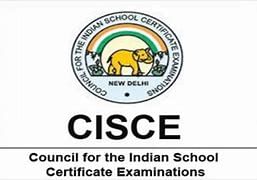
Why in News?
Council for the Indian School Certificate Examinations (CISCE) has cancelled the compartment tests for the Class 12 board exams 2024.
About Council for the Indian School Certificate Examination (CISCE):
- CISCE is a privately held national-level board of school education in India that supervises and controls the Indian Certificate of Secondary Education (ICSE).
- It was established in 1958. Over 2,100 schools in India and abroad are affiliated to the CISCE.
- It has been designed to deliver an examination in the course of general education through the medium of English, in accordance with the recommendations of the New Education Policy 1986.
- CISCE conducts three examinations, namely, the Indian Certificate of Secondary Education (ICSE –Class X); The Indian School Certificate (ISC - Class XII) and the Certificate in Vocational Education (CVE - Year 12).
- The subject choices and syllabuses prescribed for these examinations are varied and aimed at nurturing the unique gifts of individual pupils.
- It does not allow a private student to appear for the exam, which has not been studying in ICSE affiliated school.
- The Council has been so constituted as to secure suitable representation of: Government of India, State Governments/Union Territories in which there are Schools affiliated to the Council, the Inter-State Board for Anglo Indian Education, the Association of Indian Universities, the Association of Heads of Anglo-Indian Schools, the Indian Public Schools’ Conference, the Association of Schools for the ISC Examination and members co-opted by the Executive Committee of the Council.
Source: Times of India
National Mission for Clean Ganga (NMCG)
Subject: Polity
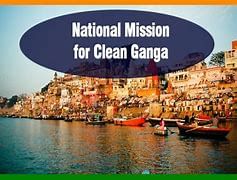
Why in News?
The National Mission for Clean Ganga (NMCG) recently signed a Memorandum of Common Purpose (MoCP) with the Mississippi River Cities and Towns Initiative (MRCTI), which represents 124 cities/towns situated along the banks of the Mississippi River, the United States.
About National Mission for Clean Ganga (NMCG):
- It is a registered society under the Ministry of Jal Shakti, Government of India, to take measures for prevention, control and abatement of environmental pollution in the river Ganga and to ensure continuous adequate flow of water so as to rejuvenate the river Ganga.
- It acted as the implementation arm of the National Ganga River Basin Authority (NGRBA), which was constituted under the provisions of the Environment (Protection) Act (EPA), 1986.
- NGRBA has since been dissolved with effect from 2016, consequent to the constitution of the National Council for Rejuvenation, Protection and Management of River Ganga (referred to as National Ganga Council).
- The aims and objectives of NMCG is to accomplish the mandate of the NGRBA:
- To ensure effective abatement of pollution and rejuvenation of the river Ganga by adopting a river basin approach to promote inter-sectoral co-ordination for comprehensive planning and management and
- To maintain minimum ecological flows in the river Ganga with the aim of ensuring water quality and environmentally sustainable development.
- Structure:
- NMCG has a two-tier management structure that comprises of Governing Council and Executive Committee. Both of them are headed by the Director General, NMCG.
- The Executive Committee has been authorized to accord approval for all projects up to Rs. 1000 crores.
- Similar to the structure at the national level, State Programme Management Groups (SPMGs) act as the implementing arm of State Ganga Committees.
- The Director General (DG) of NMCG is an Additional Secretary in the Government of India.
Source: Indian Express
Advisory issued against drug ‘Meftal’
Subject: Governance
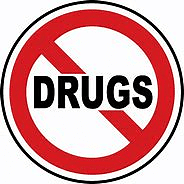
Why in News?
Pharma standard body Indian Pharmacopoeia Commission (IPC) has issued a drug safety alert for commonly used painkiller mefenamic acid, popularly sold under the brand name Meftal.
What is Meftal used for?
- Meftal 500, a non-steroidal anti-inflammatory drug (NSAID) is usually prescribed in treatment for conditions like menstrual pain, headache, muscle, joint, or dental pain.
- It has been advised to take the table with food.
- The most common side effects of the medicine include mild vomiting, stomach pain, nausea, headache, and dizziness.
What does the alert against Meftal say?
- IPC stated that a preliminary analysis of adverse drug reactions from the Pharmacovigilance Programme of India (PvPI) database revealed drug reactions with eosinophilia and systemic symptoms (DRESS) syndrome.
- DRESS, also known as drug induced hypersensitivity syndrome, is an adverse drug reaction that can even be life threatening.
- It may cause damage to several organs, especially to the kidneys, heart, lungs, and pancreas.
- The mortality rate is high and is about 10 per cent.
Back2Basics: Indian Pharmacopoeia Commission (IPC)
| Details | |
| Establishment | 1956, An autonomous body under the Ministry of Health and Family Welfare |
| Primary Objective | To promote public health by setting and updating standards for drug quality in India. |
| Key Publication | Indian Pharmacopoeia (IP), a legally recognized book of drug standards. |
| Role in Drug Regulation | Standards set in the IP are enforceable by law, crucial for India’s drug regulatory framework. |
| International Recognition | Collaborates with WHO and aligns with global drug standards. |
| Pharmacovigilance Program | Involved in monitoring and analyzing adverse drug reactions through the PvPI. |
| Quality Control & Training | Engages in drug quality control and provides training to regulatory bodies and the pharmaceutical industry. |
| Publication Updates | Periodically updates the IP to include new drugs and revise existing standards. |
| Collaboration | Works with the pharmaceutical industry, academia, and regulatory bodies. |
| Global Harmonization | Aims to harmonize the IP with international pharmacopoeias like the USP and BP. |
Source: Indian Express
GS-III
India climate action fourth strongest
Subject: Environment and Ecology

Why in News?
Climate Change Performance Index (CCPI) 2024 was released on the sidelines of the ongoing COP28 at Dubai.
- India ranked 7th in this year’s Climate Change Performance Index, up one spot from the previous one.
Change Performance Index (CCPI)
- About
- CCPI is a scoring system that measures the climate protection performance of countries. It was first published in 2005.
- It is designed to improve transparency in international climate politics.
- Function
- The CCPI uses a standardized framework to compare the climate performance of 63 countries and the EU, which together account for over 90% of global greenhouse gas emissions.
- The climate protection performance is assessed in four categories: GHG Emissions, Renewable Energy, Energy Use and Climate Policy.
- The analysis also reports on the extent to which each country is taking actions in the areas of emissions, renewable energy and energy use in order to achieve the climate goals set in Paris.
- Ranking
- Based on each country's overall score.
- Published by
- Germanwatch, the New Climate Institute and the Climate Action Network publish the index annually.
News Summary: India climate action fourth strongest
- India’s climate actions were rated the fourth strongest in an annual performance index released by Germanwatch.
Key highlights of the report
- Top performers
- Denmark retained the top spot with a score of 75.59 per cent.
- It should be noted that none of these countries have been able to achieve a very high rating over the last few years.
- Hence, the first three ranks are left vacant.
- Estonia and the Philippines occupied the second and third ranks respectively, with 72.07 and 70.70.
- India followed closely with 70.25 per cent.
- Worst performers
- Most developed countries fared poorly compared to last year including the United Kingdom, the United States, Italy and others.
- Saudi Arabia was at the bottom
- Steps needed
- Despite the urgent need to decarbonise all sectors, global greenhouse gases (GHG) have increased in 2022 and atmospheric CO2 is now 50 per cent higher than pre-industrial levels.
- CCPI countries must have an emissions peak by 2025 to keep the 1.5°C goal in reach.
- Moreover, emissions must be halved by 2030 (vs 2020) levels.
- Denmark retained the top spot with a score of 75.59 per cent.
India specific observation in the report
- Fourth best ranking in the index
- India’s high population, which automatically reduces its per capita energy use, plays a major role in giving it a high position in climate performance.
- India’s rank in different categories
- India was ranked 9th in GHG Emissions and 10th in Energy Use among assessed countries.
- In Climate Policy too, India was ranked 10th.
- In Renewable Energy, India is ranked 37th, barely remaining within the ‘high’ performance category.
- India on track to meet a benchmark of well below 2°C in per capita GHG category
- India’s coal use was pointed out
- It said that while India is trying to meet its Nationally Determined Contribution (NDC) but India’s growing energy needs are still being met by its heavy reliance on coal, along with oil and gas.
- This dependence is a major source of GHG emissions and causes severe air pollution, especially in the cities.
- India is among the most air-polluted countries of the world.
Source: Financial Express
Banni Grassland
Subject: Environment and Ecology
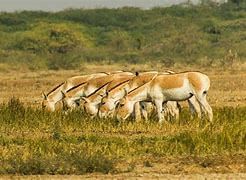
Why in News?
The Gujarat Government recently said that the Central Government has approved setting up a cheetah breeding and conservation centre in the Banni Grassland.
About Banni Grassland:
- It is located along the northern border of Kachchh district in the State of
- It is one of the largest grasslands in the Indian subcontinent with an area of over 2500 sq. km.
- Many factors have served to shape Banni over time, including the damming of rivers, the introduction and spread of the invasive Prosopis juliflora tree, and the continually varying composition and density of livestock that have grazed these grasslands for many centuries.
- The Banni is also home to 22 ethnic groups, the majority of whom are pastoralists, spread across 48 settlements in 19 Panchayats, with a population of close to 40,000 people.
- It is home to great biological diversity, having 37 grass species, 275 bird species, and domesticated animals like Buffalo, Sheep, Goat, Horses and Camel, as well as wildlife.
- The Kutch Desert Wildlife Sanctuary which spans over an area of 380 sq. km and the recently notified 227 Sq. km Chhari Dhand Conservation Reserve are part of the Banni Grasslands.
- Flora: The vegetation here mainly comprises Prosopis Juliflora, Cressa critica, Cyperus spp, Sporobolus, Dichanthium, and Aristida.
- Fauna:
- It is home to mammals such as the Nilgai, Chinkara, Blackbuck, Wild boar, Golden Jackal, Indian Hare, Indian Wolf, Caracal, Asiatic Wildcat and Desert Fox etc.
- The region also serves as a breeding ground for the Banni buffalo and the Kankrej cow.
Source: Deccan Herald
3 reasons why the RBI has held interest rates steady
Subject: Economy
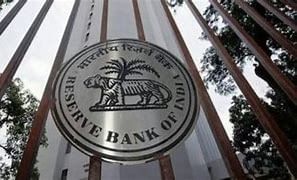
Why in News?
The RBI’s recent monetary policy decision maintains a cautious stance, driven by concerns over persistent food inflation and global central banks signaling higher interest rates. Despite a positive economic outlook, challenges include incomplete transmission of past rate hikes and potential risks from interconnectedness between banks and non-banks.
Key Highlights:
- The Reserve Bank of India (RBI) maintained its pause on monetary policy and retained the withdrawal-of-accommodation stance.
- Reasons for the decision include ongoing concerns about inflation, particularly in critical food items, despite a recent decrease.
- Influences from systemically important central banks, such as the US Federal Reserve and the European Central Bank, impact India’s monetary policy.
Key Challenges:
- Persistent risks from food inflation, driven by factors like an uneven monsoon and global food supply uncertainties.
- Impact of higher interest rates signaled by central banks like the US Federal Reserve and the European Central Bank on India’s economy.
- Incomplete transmission of past rate hikes into lending rates poses challenges for the RBI.
Key Terms:
- Monetary Policy Committee (MPC): A committee responsible for framing India’s monetary policy.
- Core CPI Inflation: Consumer Price Index inflation excluding volatile food and fuel components.
- Macroprudential Tools: Measures used by central banks to ensure the stability of the financial system.
Key Phrases:
- “The battle against inflation is far from over.”
- “Systemically important central banks signal higher-for-longer interest rates.”
- “Transmission of past rate hikes into lending rates remains incomplete.”
Key Quotes:
- “The RBI expects consumer inflation at 5.4 per cent this fiscal, while our forecast is slightly higher at 5.5 per cent.” (Authors)
- “The RBI Governor flagged increasing interconnectedness between banks and non-banks, raising the possibility of stress contagion.” (RBI Governor)
Key Statements:
- “Despite rate increases, bank credit growth has sustained over 15 per cent this fiscal, unchanged from last year.”
- “India will continue to be a growth outperformer among large economies this fiscal.”
Key Examples and References:
- Influence of US Federal Reserve and European Central Bank’s higher interest rates on global monetary policies.
- RBI’s use of measures like an incremental cash reserve ratio and open market sales to manage liquidity.
Key Facts and Data:
- RBI’s forecast for consumer inflation: 5.4 per cent.
- GDP growth forecast lifted to 7 per cent for the fiscal year.
Critical Analysis:
- Emphasizes ongoing concerns about inflation, particularly in critical food items.
- Highlights the impact of global central banks’ policies on India’s monetary decisions.
- Raises the challenge of incomplete transmission of rate hikes into lending rates.
Way Forward:
- Monitor and address risks related to food inflation and global interest rate dynamics.
- Continue using measures like liquidity management and macroprudential tools for financial stability.
- Assess and manage potential challenges arising from the interconnectedness of banks and non-banks.
- Anticipate and address the impact of rising interest rates on India’s economy.
Source: Financial Express
|
38 videos|5293 docs|1118 tests
|
FAQs on UPSC Daily Current Affairs- 10th December 2023 - Current Affairs & Hindu Analysis: Daily, Weekly & Monthly
| 1. What are critical minerals? |  |
| 2. What is the Council for the Indian School Certificate Examination (CISCE)? |  |
| 3. What is the National Mission for Clean Ganga (NMCG)? |  |
| 4. Why was an advisory issued against the drug 'Meftal'? |  |
| 5. Why is India's climate action considered the fourth strongest? |  |
















